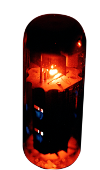FWIW, I think the original purpose of the delayed warmup rectifier was not to protect the other tubes from cathode stripping, it was to allow the use of electrolytic caps with lower voltage ratings. If the rectifier came up last, they would never see the full unloaded B+.
Really thinking about it, I don't know what in heck the standby switch is for. I didn't put one on my last build, and I haven't missed it.
I didn't put one on my last build, and I haven't missed it.
Really thinking about it, I don't know what in heck the standby switch is for.
 I didn't put one on my last build, and I haven't missed it.
I didn't put one on my last build, and I haven't missed it.

Comment